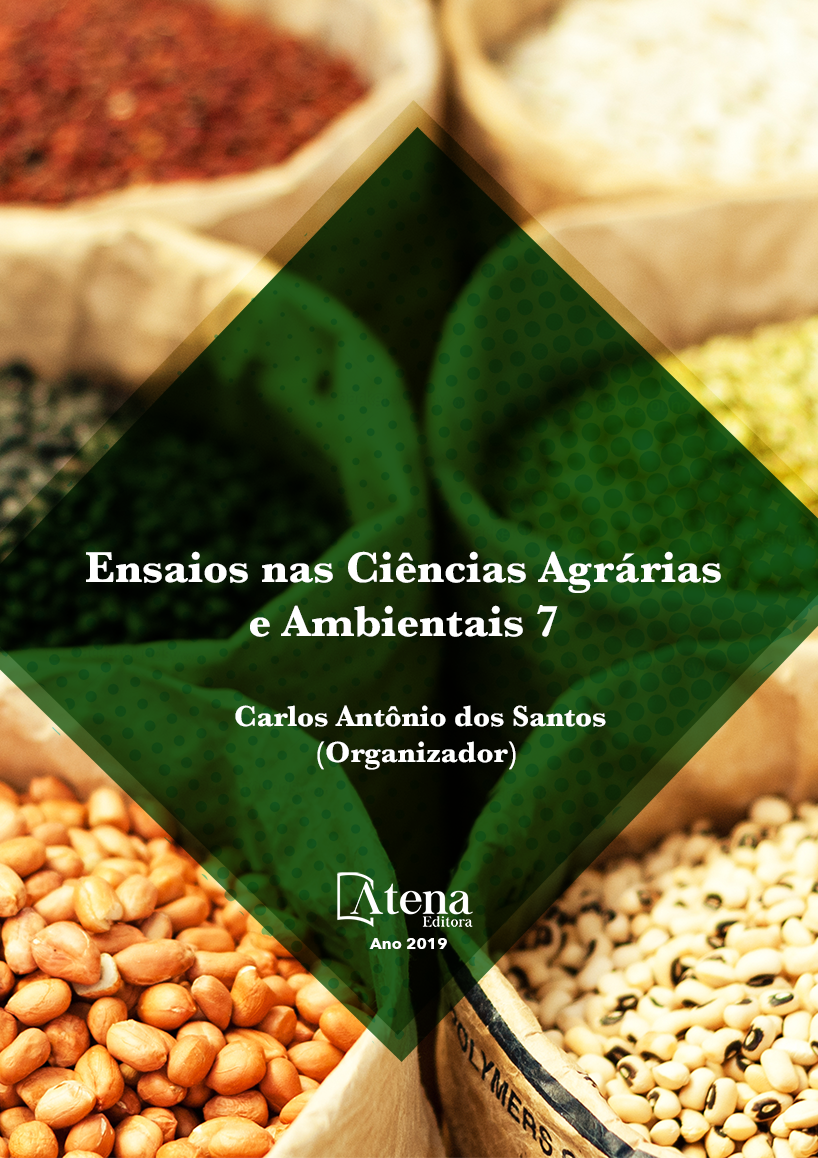
INFLUÊNCIA DA CONCENTRAÇÃO E TEMPO DE EXPOSIÇÃO AO AIB NA RIZOGÊNISE DO Eucalyptus urograndis
A produção via estaquia, é um dos
métodos mais importantes na multiplicação
de espécies florestais. A dificuldade de
enraizamento de algumas espécies envolve
a participação tanto de fatores relacionados
à própria planta como também ao ambiente,
e constitui um dos mais sérios problemas na
produção de mudas. Os hormônios vegetais
destacam-se no auxílio do crescimento e
desenvolvimento da planta, e dentre as diversas
classes, as auxinas desempenham papéis
importantes no ciclo vegetativo, além de estarem
intimamente relacionadas ao enraizamento.
Neste contexto o trabalho teve como objetivo
avaliar o percentual de enraizamento e a
qualidade das raízes de estacas do clone de
Eucalyptus urograndis I-144 que foram expostas
a concentrações e tempos de exposição do AIB.
Foram avaliados o percentual de enraizamento,
o diâmetro da estaca, o tamanho da estaca, o
número de gemas viáveis, o tamanho de raiz, o
número de raízes, e o peso da matéria fresca e
seca. O delineamento utilizado foi inteiramente
casualizado em arranjo fatorial 2x5, sendo os
fatores, duas concentrações de ácido indol
butírico (AIB) (500 e 1500 ppm) e cinco tempos
de imersão (1, 10, 30, 60 e 600 segundos)
mais testemunha. As bases das estacas foram
emergidas ou não (testemunha) em solução
de AIB, eestaqueadasem tubetes plásticos.
Com os resultados obtidos no estudo pode-se
afirmar que é viável a utilização de AIB para
aumentar opercentual de estacas enraizadas
em E. urograndis. Para melhor aproveitamento
do AIB, recomenda-se a utilização da solução
de 500 ppm em 10 segundos deexposição.
INFLUÊNCIA DA CONCENTRAÇÃO E TEMPO DE EXPOSIÇÃO AO AIB NA RIZOGÊNISE DO Eucalyptus urograndis
-
DOI: 10.22533/at.ed.5031927029
-
Palavras-chave: Miniestaquia, Enraizamento, Reguladores de crescimento.
-
Keywords: Minicutting, Rooting, Growth regulatorsFrancisco Jose Benedini Baccarin
-
Abstract:
The production via cutting, is one of
the most important methods in the multiplication
of forest species. The difficulty of rooting some
species involves the participation of both factors
related to the first plant in the environment, and
is one of the most serious problems in the production of seedlings. The plant hormones
stand out in the aid of the growth and development of the plant, and among the several
classes, the auxins play important roles in the vegetative cycle, besides being closely
related to the rooting. In this context, the objective of this work was to evaluate the
percentage of rooting and root quality of Eucalyptus urograndis I-144 clones that were
exposed to concentrations and exposure times of IBA. The percentage of rooting, stem
diameter, stem size, number of viable buds, root size, number of roots, and weight
of fresh and dry matter were evaluated. The experimental design was completely
randomized in a 2x5 factorial arrangement, with two concentrations of indole butyric
acid (AIB) (500 and 1500 ppm) and five immersion times (1, 10, 30, 60 and 600
seconds) plus a control. The bases of the cuttings were either emerged or not (control)
in IBA solution, and stacked in plastic tubes. With the results obtained in the study it
can be stated that it is feasible to use IBA to increase the number of rooted cuttings in
E. urograndis. For best use of the AIB, it is recommended to use the 500 ppm solution
within 10 seconds of exposure.
-
Número de páginas: 15
- Francisco Jose Benedini Baccarin
- Valeria Peres Lobo
- Felipe Diogo Rodrigues
- Eduardo Valim Ferreira
- Lívia de Almeida Baccarin
- Bruno


